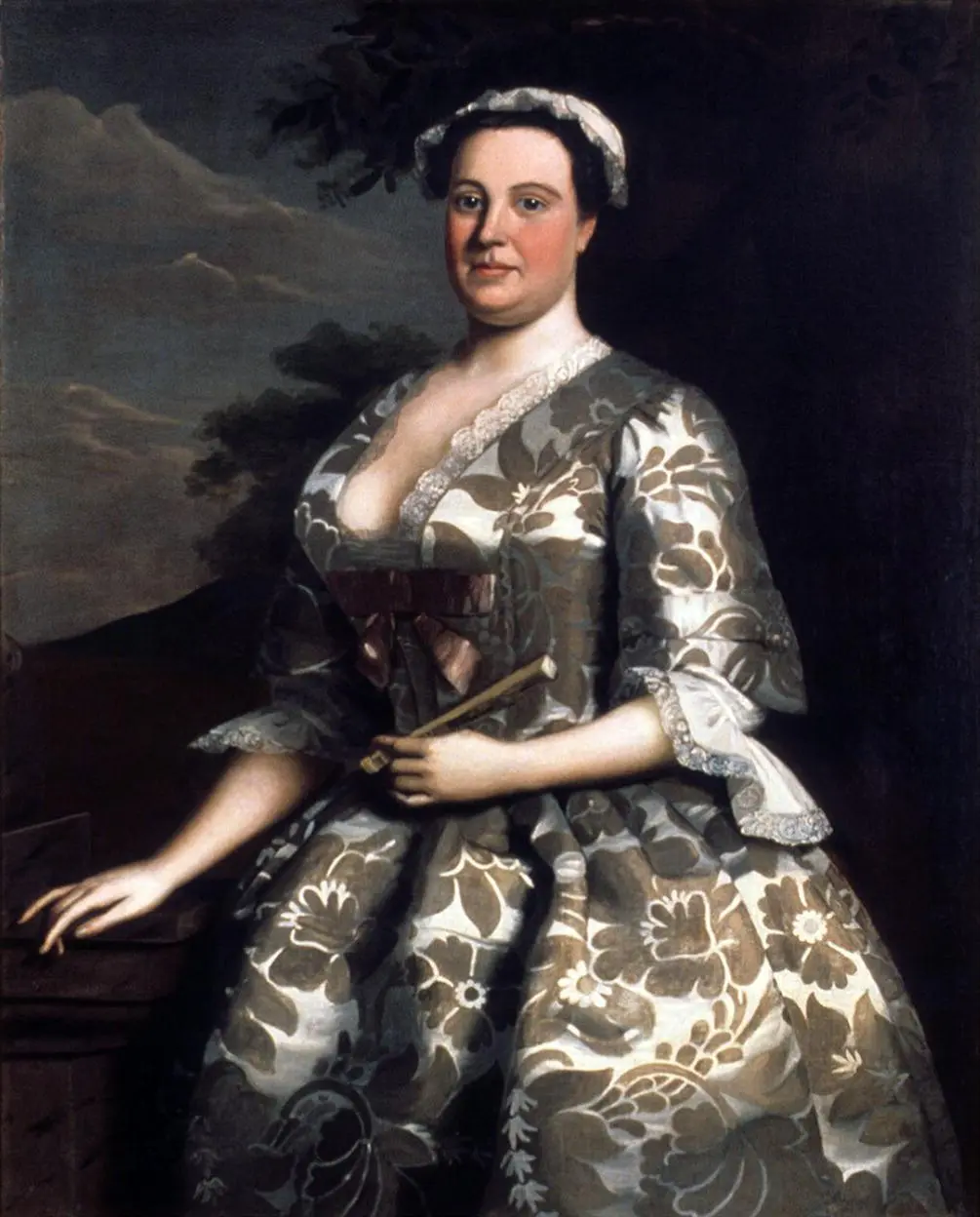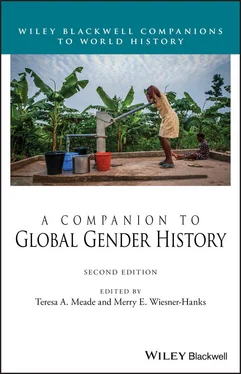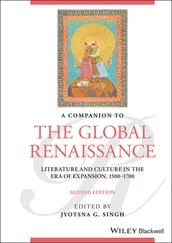Returning to the lotus shoes, yet another discovery made by Ko in her analysis of the objects was that of female community and companionship created through the making and gifting of the shoes. In the carefully embroidered details on some shoes, Ko uncovered messages between women who made gifts of such shoes (Ko, 2001). Through examples of beautifully hand‐crafted shoes, Ko shows us how women found a way to provide alternative meanings for what was a painful experience. These shoes are good examples of the polysemic nature of objects. To our twenty‐first century eyes they are symbols of the oppression of women, but Ko was interested in knowing what the shoes meant to the women who made them, gifted them, and wore them. One of the answers she found was that they could be tokens of friendship, a symbol of a sisterhood of sorts.
Such connections and communities are not visible in the textual record, thus pointing to the enormity of what scholarship like that of Ulrich and Ko is able to uncover. Hannah Barnard’s cupboard and shoes made for bound feet are objects that circulated amongst friends and family members. They symbolize how women’s mobility was limited, but also what women were able to do within their spheres and how their activity was connected to the societies in which they lived.
The examples shown thus far of the use of material objects for women’s history have been for women who were confined by the societal norms of the time and place where they lived. However, throughout history there have been women who have broken through such confinements, and for learning about them too the material culture approach can be useful. Silk textile designer Maria Garthwaite is an example of such a woman. A practitioner of a craft that was male dominated by the time she came into it, she, unlike Hannah Barnard or a Chinese woman with bound feet, actively participated in the business world. Her designs were brought as far as North America, where women purchased them to make dresses and household furnishings ( Figure 7.4). Garthwaite was an educated woman who had had a certain degree of success as an artist and a business woman. Yet, despite her achievements, she did not leave much of a paper trail that would help scholars understand her life. Historian Zara Anishanslin, who has brought Garthwaite’s work to light, was able access details of her genius only by studying the material objects that she left behind (Anishanslin, 2016). She found clues to the development of her artistic talents in the drawings and sketches that remain, and traced patterns she made through her designs and paintings and through following the financial records of merchants who traded in silk.

Figure 7.4 Robert Feke, Anne Shippen Willing (Mrs. Charles Willing), 1746. Oil on canvas. Museum purchase with funds provided by Alfred E. Bissell in memory of Henry Francis du Pont, 1969.0134 A.
Courtesy, Winterthur Museum.
One of the important arguments Anishanslin makes about Garthwaite through her designs concerns her connections to global natural history networks. In her botanical patterns, Garthwaite incorporates flora that would have been samples that botanists and natural historians were beginning to gather from their own travels abroad or from those of others. Garthwaite had knowledge of these samples and incorporated them into her designs; through her craft she brought the worlds of natural history and art together. Her entanglement in transnational networks is also seen in the way she incorporates Chinese aesthetics into her designs, again showing her access to worldly goods and her ability to adapt them to local tastes. In effect, Garthwaite was one of many craftspersons, men and women, who can be said to have been responsible for crafting new tastes for the British (and as we shall see, North American) public.
Unlike the examples of the New England cupboard and the Chinese lotus shoes, which identified the intimate spheres that women created for themselves, Garthwaite’s designs are examples of a woman inserting herself into or getting connected to what are thought of as very male‐dominated spheres. In that regard, Garthwaite is similar to the women who were present in Qumran. Both examples exhort us to keep our minds open about the possibilities of women being present and active in places and spaces where we might not otherwise expect them to be, especially if we rely solely on textual sources. And all four examples in this section challenge us to find ways to think about women’s experiences even when it might seem that it is not possible to do so.
Gender, Material Culture, and Consumption
While material culture studies have been enormously important for recovering women’s voices and experiences, this is not the only way in which the methodology has made a contribution to gender history. Histories of consumption that are attuned to questions of gender often focus on material objects and the intersection of the three approaches has led to important findings. Anishanslin, who has brought to light the work of silk designer Maria Garthwaite, has also, in the same work, introduced the figure of Anne Shippen Willing, a wealthy Philadelphia woman who was a consumer of fine silk dresses, one of which was made of a pattern designed by Garthwaite ( Figure 7.4). Where the pattern showed how Garthwaite was connected to the natural history networks of her time, the dress made from the pattern can be studied to give us clues about the woman who had the dress made and chose to have her portrait painted in it. Her consumption of this sort of garment was not accidental and it can tell us both about her as an individual and the role she played in her society.
Anne Shippen was the daughter and wife of affluent Quakers in Pennsylvania. Despite her well‐to‐do status, Shippen, like Garthwaite, has not left much in the shape of a paper trail that can shed more light on her as a person. Objects like the portrait offer important clues for understanding a woman of her station living in eighteenth‐century Philadelphia. What we can surmise is that Shippen used her access to wealth to acquire goods that helped her fashion an identity for herself as a woman of standing in her community. This can be seen in the pattern she chose, the cut of the dress, which showed off her ample figure, and the decision to have the portrait made.
The Chinese influence seen in the pattern that showed Garthwaite’s ability to adapt designs also shows Shippen’s preferences for designs that displayed an “oriental” influence. Such designs showed a worldliness on the part of the consumer, a trait that Shippen must have been eager to espouse as the wife of an influential businessman in Philadelphia. The decision to have the dress tailored in such a way that would emphasize the fullness of her bosom, and for the portrait to also show this off, can be interpreted as means of signaling her fertility. Giving birth to children was the most important way in which she could be seen to contribute to her family and society according to the norms of the time, and Shippen fulfilled this role more than adequately. She had seven children by the time the portrait was made and gave birth to 11 altogether.
The portrait made Anne Shippen visible to historians, and once she is known to us we can begin to analyze what else we can learn about her through the portrait (and other sources). We might wonder how she was able acquire the fine dress seen in the portrait. Where exactly did the money come from that allowed Shippen to be the consumer of luxury goods and to be in a position to commission a portrait? Her husband, it seems, was a trader of the kinds of fine textiles seen in the portrait, but he was also one of the major participants in the slave trade in Philadelphia. Through this fact the dress becomes entangled in yet another transatlantic network. It was brought over to New England through the trade networks between Europe and the Americas, but much of this trade and other businesses on both sides of the Atlantic were undergirded by the trade of slaves from Africa to the Americas.
Читать дальше













